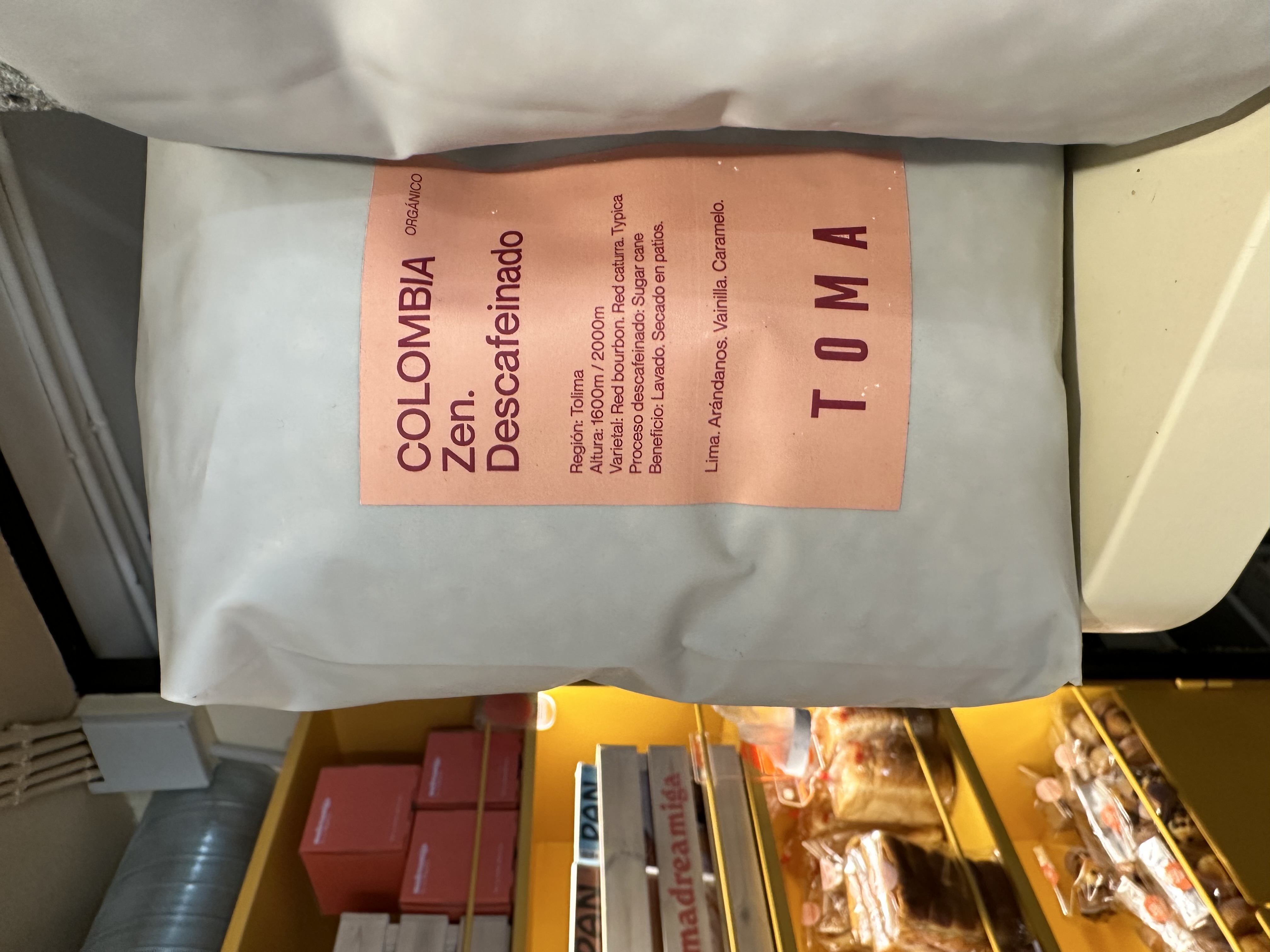Reviews(1)
5.00(1)
1 rating
5 star
100%
4 star
0%
3 star
0%
2 star
0%
1 star
0%
Latest Reviews and Tasting Notes
- Theo Chan, Managing Editor
1479 roasts rated, avg score of 4.30
5.00 - Average
4.50 - Aroma
5.00 - Value
5.00 - Finish
5.00 - Flavor
5.00 - Acidity
5.00 - Balance
A trippy decaf that stands as one of the most delicious espresso Ive had. Complex and balanced with notes of spice, lemon, gingerbread, chocolate. Very clean finish and really wanted another! I have been very impressed with the quality of decaf in Spain!Cupping Method:Decaf espresso at Madreamiga in Madrid
More Details
Roast Level: Medium
Medium roast coffee balances the beans' natural flavors and the roasting process, providing a well-rounded taste profile. When selecting a medium roast, look for a balance of acidity and sweetness, with caramel, nuts, and chocolate notes and a medium body.
Bean Source Country: Colombia
Colombian coffees are known for their balanced taste, featuring bright acidity, medium body, and a range of flavors, including fruity notes, caramel sweetness, and nutty undertones. Colombia's worldwide reputation for producing great coffee at scale is well-deserved. Increasingly some of the best microlot specialty roasts are coming from Colombia thanks to their expertise in cultivation and process.
Bean Source Region: Tolima
The coffee-growing region of Tolima in Colombia is known for producing high-quality coffee. Tolima's coffee producers cultivate their crops on the slopes of the Andes mountain range, allowing the cherries to benefit from high altitudes, rich volcanic soils, and cooler temperatures, which can lead to slower ripening and more complex flavors. Tolima's location in the central north and central south zones of Colombia provides optimal climatic conditions for coffee cultivation, with two distinct dry seasons and two wet seasons annually. This combination of ideal climate, altitude, and soil, along with the expertise of local coffee growers, results in the production of exceptional coffee beans with pronounced aromas, balanced acidity, and distinctive cup profiles.
Espresso
Espresso is a concentrated coffee beverage brewed by forcing hot water through finely-ground coffee beans under high pressure. It is characterized by its rich flavor and distinctive crema—the creamy layer that forms on top of the extracted process. When evaluating espresso, coffee experts often focus on key tasting characteristics such as aroma, flavor, body, and aftertaste. Aroma refers to the fragrant smells released during brewing, while flavor encompasses the coffee's overall taste profile, including notes of sweetness, bitterness, acidity, and richness. Body refers to the coffee's texture or mouthfeel, with descriptors like full-bodied, medium-bodied, or light-bodied. Aftertaste, or the finish, pertains to the lingering flavors and sensations experienced after swallowing the coffee. A well-prepared espresso is prized for its balance and complexity, combining these sensory attributes into a harmonious whole.
Decaf
Decaffeinated coffee has undergone a process to remove most of the caffeine content while preserving its flavor and aroma. There are three primary decaffeination methods. The solvent-based method involves soaking coffee beans in water to dissolve the caffeine, followed by adding a solvent, such as methylene chloride or ethyl acetate, to bind to the caffeine molecules selectively. The Swiss Water Process (SWP) is a chemical-free method that relies on the principles of solubility and osmosis. Finally, the carbon dioxide method involves using supercritical carbon dioxide to extract caffeine from the coffee beans. Decaf coffee typically retains most of the flavor and aroma of regular coffee but with a significantly reduced caffeine content (around 2-3%).
Best Rated Roasts of Toma Cafe
Toma Cafe is a coffee roaster from Madrid, Spain. We have 3 cataloged roasts with 3 total reviews with a score of 4.50.
International Rank: #279 out of 1135
| Name | Roast Level | Bean Source |
|---|---|---|
4.50(1) | - | Colombia |
4.00(1) | - | - |
Similar Roasts
| Name | Roaster | Roast Level | Bean Source |
|---|---|---|---|
5.00(6) | Mirra Coffee | Light | Colombia |
| Presta Coffee Roasters | Light | Colombia | |
5.00(4) | Dak Coffee Roasters | Light | Colombia |
4.80(5) | 49th Parallel Coffee Roasters | Light | Guatemala |
4.67(6) | Greater Goods Roasting | Medium | International Blend |
4.67(6) | Caffé Vita | Medium | - |
4.88(4) | Cafe Madre Selva | Medium | Colombia |
4.88(4) | Black and White Coffee Roasters | Light | Colombia |
4.88(4) | Phil & Sebastian Coffee Roasters | Medium | Honduras |
5.00(3) | Bell Lane Coffee | Light | Colombia |

 Madrid
Madrid 